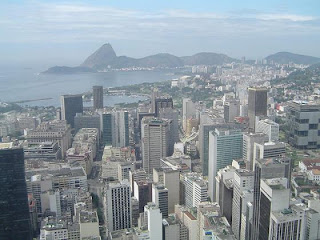Like no other music before or after it, Hip Hop intrinsically belongs to the city. Hip Hop was birthed in the city, lives in the city and could not have been started anywhere else but the city.
Other musical genres have their meccas of their musical art, be it Jazz from
New Orleans, Country in
Nashville, the Blues of
Memphis or the Rhythm of
Motown...but while these cities that drew in artists from all over the map to help spread their genre's music,
HIP HOP was started purely by city residents, for city residents with out any outside influences.
In short, Hip Hop is a product of the city. Similarly to the Blues, Hip Hop begun from the spirit of the
havenots and the burdened. The economic conditions of people from both genres helped inspire the melodies, songs and messages of their plight, glory and spirit. However, Hip Hop as a genre itself was created from it's own economic conditions. The lack of money for instruments, music training or even music programs in city schools inspired city youth to come up with their own music and their own sound without instruments.
Hip Hop began when
DJ's took the drum solo or break beat of a record from another genre and began scratching the record back and forth to extend the break beat into a grove. Once the beat was sampled, people began to make simple rhymes to them while the kids who danced to the break beats, who were called B-Boys created their own dance that we know of as
Breakdancing. Along with graffiti, all the elements of the Hip Hop culture formed creating a new genre of music straight from the city.
What this series will look at is the influence that city planning and government programs had on cities that created the conditions that Hip Hop was created from. This series will look all the way back to
Urban Renewal, and the affect that these programs had in creating housing projects as well as "Blight Removal" programs which targeted minority neighborhoods. This series will look back to the effects that "
Reagonomics" had on cities and the poor. The dramatic impact of the
crack cocaine era and its affects on Hip Hip will be explored and lastly the series will look at
gentrification in cities today.
This should be an interesting series and as always we would love to hear people's responses and comments.




















